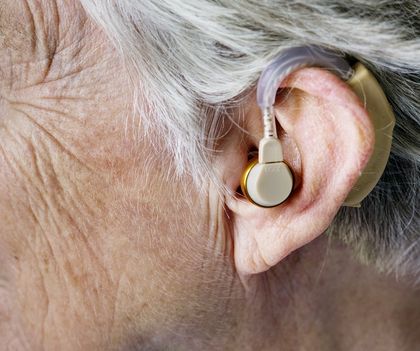“We have a responsibility to ensure the visibility of disabled people”.
 Over 96% of government websites hide disabled people on their sites. / Unsplash.
Over 96% of government websites hide disabled people on their sites. / Unsplash.
A research about the presence of disabled people on government and stock-photos websites looked at more than 500 government websites from around the globe, and found that around 50% show disabled people in images, but only less than 4% have them on non-health and wellness related pages.
Not only governments failed on this, stock photo websites do not tag disabled people as whole individuals, but only for their disability.
ONLY IN MEDICAL PAGES
Out of the 502 websites explored by Website Planet, only 24 showed photos of disabled people on non-medical pages, and none of those were found on the website homepage.
Most of them were in blog posts discussing a specific organization or person. For example, some Brazilian websites included articles about the Paralympics, but, aside from that, there were no mentions or images of disabled individuals on the website.
Many countries failed to provide any representation on their official government site, including Taiwan, Slovakia, and France.
“NORMALIZING THE USE OF DIVERSE PICTURES IS THE ONLY WAY TO INCLUSION”
The researchers of Website Planet have also tried to explain why is this clear exclusion of a vast segment of society occurring.
“The answer may lie in marketing. State-run websites, like any websites, are powered by metrics. Webmasters tirelessly review stats to ensure their domain is reaching as many people as possible. Herein lies the potential problem when it comes to representation”, they said.
However, Website Planet believes there are more reasons why governments do not show disabled people on their websites.
“Most countries have what can be described as a ‘social norm’, a stereotyped idea of how the average citizen looks. When creating content, countries aim for the social majority. Whether this refers to race, hair colour, size or, as in this case , abilities and disabilities, it’s a common problem that can quickly isolate those in minority groups”.
Additionally, “disabled individuals could be left out of website photos thanks to the domain review process. It may be the case that images of disabled individuals encourage fewer conversions and, therefore, reduce the perceived success of the web page”, they explained.
 The research calls to normalize the use of diverse photographs, including individuals from all walks of life, as the only way to create inclusion.
The research calls to normalize the use of diverse photographs, including individuals from all walks of life, as the only way to create inclusion.However, “local authorities have a responsibility to their citizens. Eradicating representation for a large chunk of society is an inexcusable trade for improved website metrics”, Website Planet said.
“Arguing that there is no demand for better representation in images is superfluous. Normalizing the use of diverse photographs, including individuals from all walks of life, is the only way to create an expectation for inclusion”, they concluded.
STOCK FOTO WEBSITES
The responsibility to vet their websites for this problem properly doesn’t lie entirely with the governments.
Most photos online come from stock photo sites, which offer royalty-free images that companies can use without worrying about copyright infringement.
Website Planet researches investigated if pictures of disabled were tagged under the right keywords, so that content creators will use them on their web pages.
In order to test that, they searched a variety of different keywords, including happy person, person smiling, and happy face. None of these popular tags featured photos of disabled individuals.
However, a quick search of person in wheelchair revealed that plenty of images of happy disabled people do exist.
“If we’re ever going to achieve equality online, resource catalogues like Shutterstock have just as much responsibility for changing the current prejudiced status quo”, they said.
“WE HAVE A RESPONSIBILTY TO ENSURE THE VISIILITY OF DISABLED PEOPLE”
Website Planet warns that “it’s easy to cast aside these issues a meaningless, but it’s undeniable that media has an incredible effect on how we see the world”.
“Shunning valuable factors of society from these outlets is equally as destructive as excluding them in the real world. We have a responsibility to ensure disabled people, and other minorities, are given the visibility they deserve”.

Las opiniones vertidas por nuestros colaboradores se realizan a nivel personal, pudiendo coincidir o no con la postura de la dirección de Protestante Digital.
Si quieres comentar o